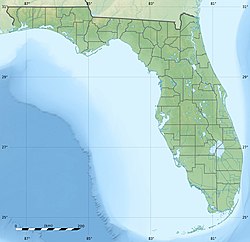| Telogia Creek Tologic River | |
|---|---|
| Location | |
| Country | United States |
| State | Florida |
| Counties | Gadsden Liberty |
| Physical characteristics | |
| Source | |
| • coordinates | 30°38′41″N84°41′06″W / 30.64472°N 84.68500°W |
| Mouth | Ochlockonee River |
• coordinates | 30°16′06″N84°44′12″W / 30.26833°N 84.73667°W |
• elevation | 20 feet (6.1 m) |
Telogia Creek is a waterway in Florida. It is a major tributary of the Ochlockonee River. [1] It is used for canoeing. [2] The United States Geological Survey (USGS) monitors its discharge near Bristol. [3] The stream's water quality is monitored at a site near Greensboro. [4] Road crossings include the Telogia Creek Bridge.
Botanist Roland McMillan Harper identified several species in the area of the creek during his travels in Florida 1909–1910. [5]
The surrounding area includes horse properties.
There is a community of Telogia, a scouting Telogia Camp, and a Telogia Creek Road. Lampropeltis getula meansi, the Appalachicola Kingsnake, lives in the area. It is non-venomous.

